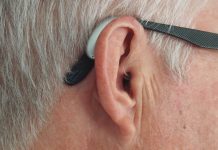Many smokers struggle when trying to quit, so they tend to seek aid from products and therapies that can help ease the battle. Smoking becomes addictive because of nicotine, so products and treatments aim to counter nicotine addiction. Quitting smoking involves fighting physical dependence and withdrawal symptoms that make it more challenging. There are prescription and over-the-counter products to help, which fall into nicotine replacement products and medications. Here’s a rundown of these items:
Bupropion
Bupropion is an antidepressant prescription medication that helps people quit smoking through extended-release. It is said to reduce cravings and withdrawal symptoms by using an increased level of certain chemicals. A smoker has to take this for about a week or two before quitting. Side effects include mood changes, dry mouth, and insomnia.
Varenicline
Varenicline is also a prescription drug that decreases nicotine cravings and withdrawal symptoms by blocking the brain’s nicotine receptors. Users should also start taking it a week or two before quitting. Some known side effects are nausea, vivid dreams, and mood swings. For medical advice, service providers such as Anytime Doctor provide convenient online consultations.
Nicotine patch
The nicotine patch is a self-adhesive patch that aids in quitting smoking by releasing a slow, controlled amount of nicotine into the body through the skin. Quitters apply it on a hairless part of the body between the neck and waist, usually on the upper arm or chest. It comes in various doses and does not require a prescription. It is used to reduce nicotine cravings and withdrawal symptoms for 24 hours, so it has to be replaced daily. Reported side effects include skin itching or irritation, insomnia, and vivid dreams.
Nicotine gum
Like a nicotine patch, the nicotine gum releases nicotine into the body to control cravings and withdrawal symptoms. Users can use up to 24 pieces every one or two hours a day. They bite it to release a peppery taste and hold it between the gumline and cheek. They can discard the gum as soon as all nicotine has been released. It is available in two strengths without any prescription and is ideal for controlling sudden cravings.
Nicotine lozenge
The nicotine lozenge is similar to the nicotine gum, except users do not need to bite or chew it but suck it slowly to release nicotine. As a result, it works more rapidly. It also does not require any prescription.
Nicotine inhaler
The nicotine inhaler also releases a small amount of nicotine when puffed. It keeps the hand busy, so others say it works more effectively when there is sudden craving. However, it requires a prescription and may cause throat or mouth irritation.
Nicotine nasal spray
The nasal spray releases nicotine through the nose as the user sprays it once or twice an hour. It also works faster during nicotine cravings or withdrawal symptoms. Side effects include rhinitis, nasal irritation, sneezing, and watery eyes. Like the inhaler, it needs a prescription.
Conclusion
Controlling nicotine cravings is a big part of quitting smoking, and these products are there to help. Some quitters use it in combination with another product. Getting support from trained professionals specializing in tobacco dependence treatments is also vital.







